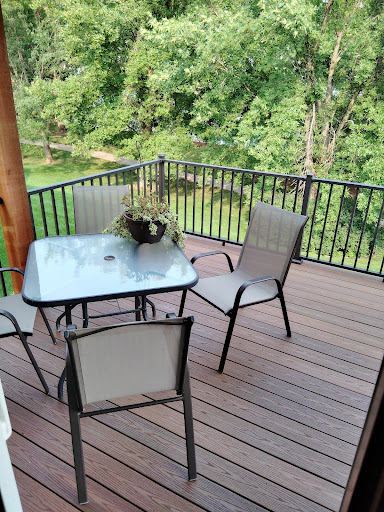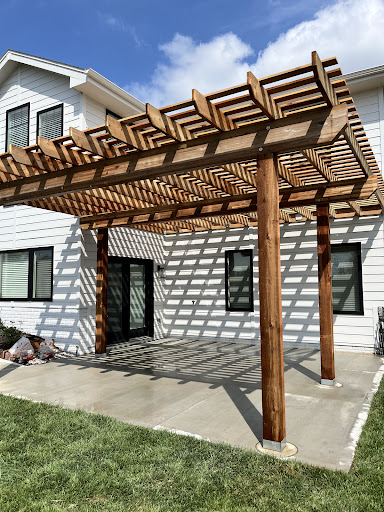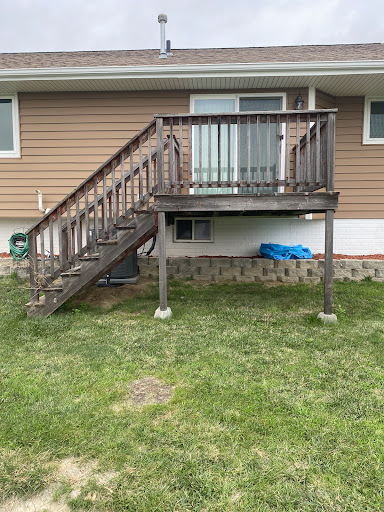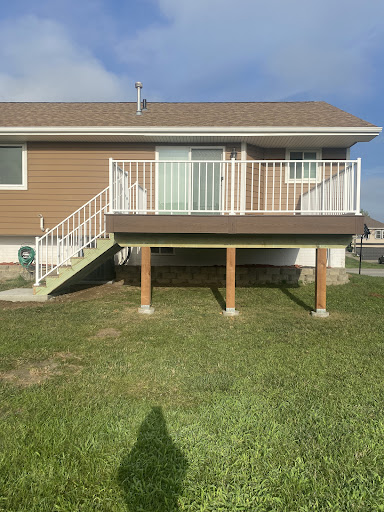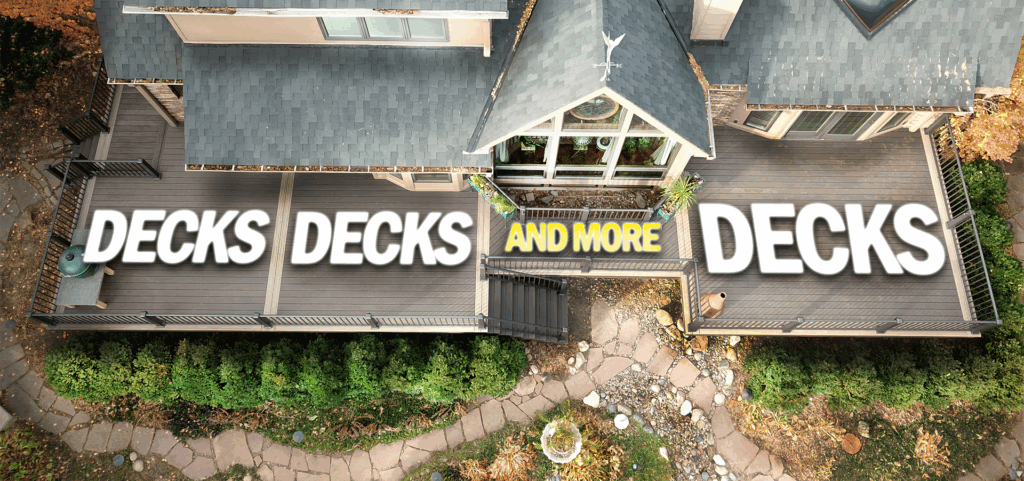Concrete Patio: Durable and Stylish Outdoor Solutions
A concrete patio is a popular choice for homeowners looking to create a versatile and long-lasting outdoor living space. Known for its durability and low maintenance, concrete offers a solid foundation for various outdoor activities, from dining and entertaining to relaxing and enjoying the outdoors. Discover the benefits of concrete patios and how they can enhance your outdoor area.
Benefits of a Concrete Patio
- Durability: Concrete patios are renowned for their strength and durability. They can withstand heavy use, harsh weather conditions, and the test of time without cracking or fading, making them an excellent investment for any outdoor space.
- Low Maintenance: Unlike other materials, concrete patios require minimal maintenance. Regular sweeping and occasional cleaning with a mild detergent are usually sufficient to keep the surface looking great. Concrete does not need sealing or staining as often as wood or other materials.
- Design Flexibility: Concrete patios offer a wide range of design options. From traditional grey slabs to decorative stamped patterns and colored finishes, concrete can be customized to match any aesthetic or style preference. You can also incorporate features like borders, inlays, or textures to create a unique look.
- Cost-Effective: Concrete patios are often more affordable than many other materials, such as natural stone or high-end pavers. This makes them a cost-effective option for achieving a beautiful and functional outdoor space.
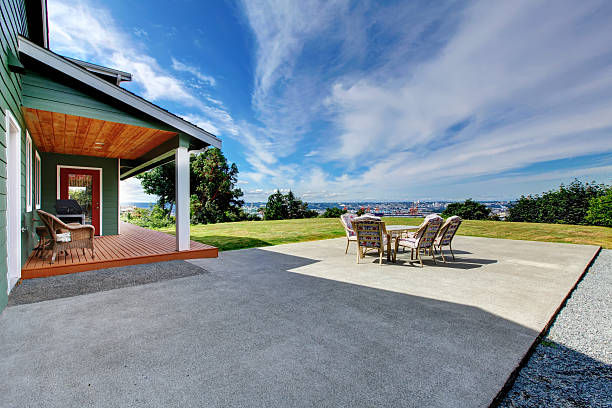
Types of Concrete Patios
- Plain Concrete: The simplest form of concrete patio, plain concrete offers a clean, minimalist look. It is often used for functional outdoor areas and can be enhanced with staining or sealing to improve its appearance.
- Stamped Concrete: Stamped concrete is designed to mimic the appearance of other materials, such as brick, stone, or wood. By using molds and dyes, stamped concrete can create a textured, decorative surface that adds visual interest to your patio.
- Colored Concrete: Colored concrete involves mixing pigments into the concrete to achieve a specific hue. This option allows for a wide range of colors and can be combined with other techniques, like stamping or staining, for added visual appeal.
- Exposed Aggregate: Exposed aggregate concrete features a textured surface created by removing the top layer of cement to reveal the underlying stones or pebbles. This type of patio offers a unique, natural look and provides excellent slip resistance.
The Concrete Patio Installation Process
- Planning and Design: Start by planning your patio’s design and layout. Consider factors such as size, shape, and any additional features you want to include, like seating areas or fire pits. A professional can help you create a design that meets your needs and complements your home.
- Site Preparation: Proper site preparation is crucial for a successful installation. This involves clearing the area, leveling the ground, and ensuring proper drainage to prevent water pooling or erosion.
- Formwork and Pouring: Construct the forms to hold the concrete in place, then pour the concrete mixture into the forms. Proper pouring and leveling ensure a smooth and even surface.
- Finishing: After pouring, the concrete is finished to achieve the desired texture and appearance. Techniques such as troweling, stamping, or brushing can be used to create various effects.
- Curing and Sealing: Allow the concrete to cure properly to achieve its full strength and durability. Sealing the surface can enhance its appearance and provide additional protection against stains and weathering.
Transform Your Outdoor Space with Concrete
A concrete patio offers a durable, low-maintenance, and customizable solution for enhancing your outdoor area. With a variety of design options and benefits, a concrete patio can provide a stylish and functional space for entertaining, relaxing, and enjoying the outdoors.
 free estimates: (402) 690-1050
free estimates: (402) 690-1050
























